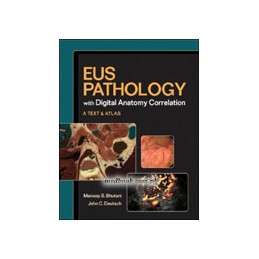- Obniżka


 Dostawa
Dostawa
Wybierz Paczkomat Inpost, Orlen Paczkę, DHL, DPD, Pocztę, email (dla ebooków). Kliknij po więcej
 Płatność
Płatność
Zapłać szybkim przelewem, kartą płatniczą lub za pobraniem. Kliknij po więcej szczegółów
 Zwroty
Zwroty
Jeżeli jesteś konsumentem możesz zwrócić towar w ciągu 14 dni*. Kliknij po więcej szczegółów
The Visible Human data set was created by Dr. Vic Spitzer and colleagues at the University of Colorado and is currently housed at the universitys Center for Human Simulation. The data set consists of high resolution transaxial digital images captured as cadavers were abraded away at 1 mm or less depths. These images are compiled into blocks of data and each structure is identified. This information can be used to pull out and manipulate 3-D structures as well as allowing one to review planar anatomy in any orientation. Using the Visible Human dataset, one should be able to find a normal anatomy correlate to any image found during a EUS examination.
However, as important as normal anatomy is, it is the abnormal features which are the crux of an EUS examination.
Endosonographers are asked to define lumps, bumps, cysts to find correlates for symptoms and abnormal laboratory findings. Accuracy requires a tremendous amount of skill and experience. To help in this task, we have assembled chapters from a world-wide group of expert endosonographers. These authors have shared their insight and images to help the readers of this work better see and understand some of the complexities uncovered during a EUS evaluation.
Opis
